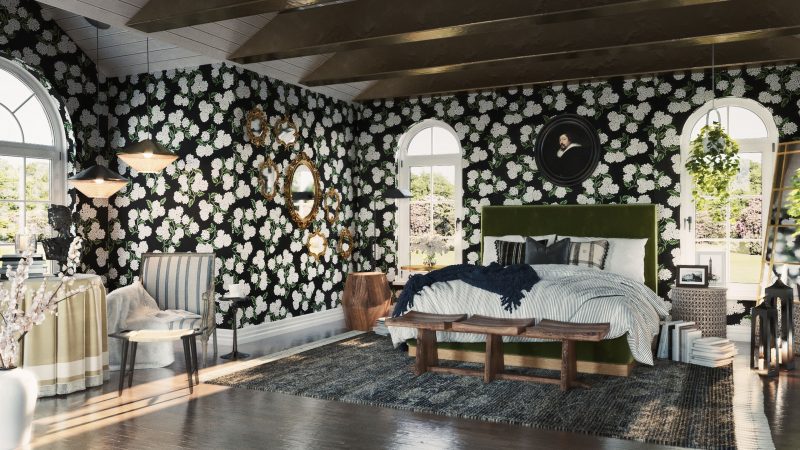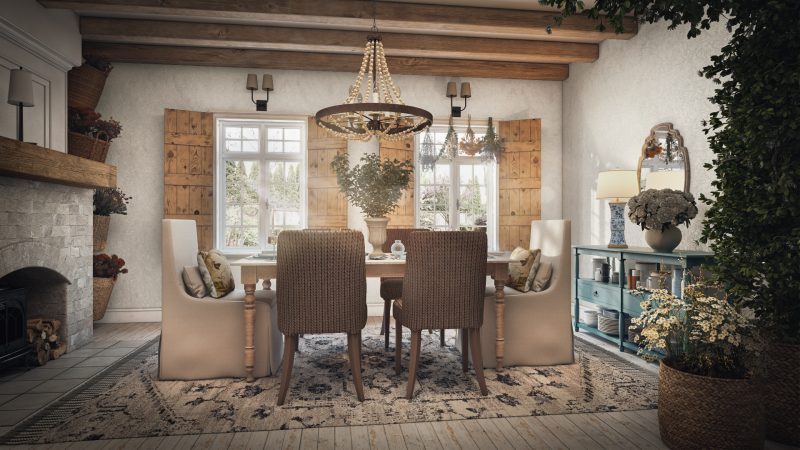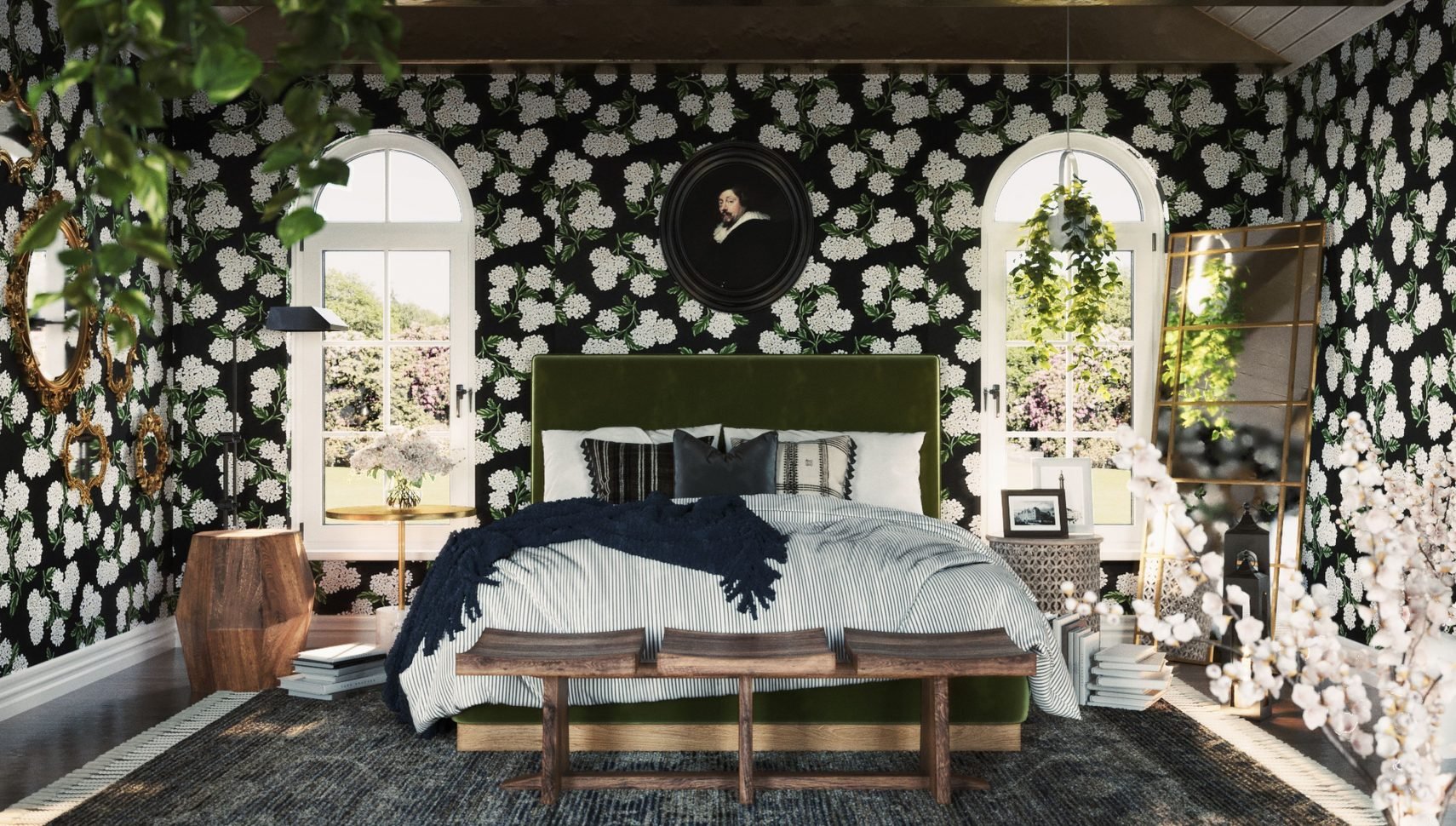Picture this… a rose-covered cottage set amidst a sun-dappled field of flowers, deer grazing in the distance, the scent of fresh-baked scones in the air, and a few bonnets for good measure. Such idyllic scenes are no longer reserved for your grandma’s stories of “life on the farm,” but rather the inspiration for a modern-day folk aesthetic lovingly dubbed ‘cottagecore.’
And in case you missed the floral-printed memo, cottagecore is having a serious moment. Architectural Digest describes the trend as an homage to a simpler way of living, with an emphasis on crafts, agriculture, and a particular harmony with nature. Basically, it’s the Kinfolk life on steroids. Whether that’s jumping on the homemade sourdough bandwagon, harvesting from your backyard garden, or twirling about in a flutter sleeved maxi dress a la Little Women, we’re seeing influences of this pastoral movement pervade the fashion and design landscapes — and we’re all about it.
If this is the first time you’re hearing the term, don’t fret: our designers are here to get you up to speed on all things for the cottagecore house and explore how it could be your new favorite aesthetic.

Make It Personal, Then Add Patina
Recall Iris’ charming Cotswold cottage from The Holiday? A quaint countryside abode filled to the brim with cozy accents, collected antiques, and personal touches that just feels so warm and… homey. It’s a mood that captures the essence of cottagecore design.
Let’s break it down a bit. For designer Brady Burke, a cottagecore-inspired space isn’t complete without a personal touch. “When leaning into this style, I strive to create something that feels very lived-in — and I love to work with personal effects and curated goods that tell the story of those living in a space. Heritage pieces that add a sense of history feel right at home here.” Framed vintage photos that work as statement pieces and casually draped knit throws are some of the elements he often incorporates to make a space feel a lot more like an inviting dwelling and not just a room.
The trend elicits very whimsical feelings without feeling over-the-top. Burke likens his own cottagecore bedroom design to the recreation of a main character’s bedroom from a “favorite childhood story. I dreamed up a room intended for sleeping in on Sundays, reading late at night under the covers, or dancing to your favorite record.” With a bedroom like that, it’s hard to imagine ever wanting to leave.
Moreover, where other styles can be loud and super stimulating with bold colors and lines, cottagecore puts emphasis on warmth and contentment. “Cottagecore focuses on a calm approach to living,” says Burke. “Cottagecore spaces feel safe and warm where the worries of the world seem small.” And yes, here’s proof that ‘cottage calm’ can include dramatic floral wallpaper.
Get all the pieces for Brady’s cottagecore bedroom here.

Draw Inspiration From Nature -- Or The Farm
Cue: animated birds singing in the English countryside. Elements from the natural world are foundational to creating a recipe for enchantment epitomized in a cottagecore space. Heavily influenced by traditional craftsmanship, you can expect distressed woods, woven materials, plenty of fresh flowers, and a general harmony between the indoors and outdoors.
Designer Melissa Wagner creates a picturesque cottagecore dining room leveraging the standard cottagecore staples, like rustic woods, organic fabrics, and old-world sconces for a “down-on-the-homestead” vibe that still feels current. You’ll also notice lots of greenery (did you catch those jute wall baskets!?) and raw materials, key characteristics of cottagecore style. “I wanted to create a soft, romantic, and feminine space where the inhabitant would feel an instant sense of respite and calm. For me, this is a garden villa in an Italian countryside, so I kept that in mind as I created this dining area.”
Echoing that sentiment, Designer Vivian Torres shares: “Cottagecore is creating a shift back to the use of rustic, distressed, or worn materials that have character and depth, and encourages leveraging decor with a purpose—whether that’s a book for reading, a blanket for warmth, or a basket to house yarn for knitting.” Just as one would see in nature or experience on the farmstead, there’s a practicality infused into this trend that emphasizes accessorizing with utilitarian objects (we see you, dried herbs).

Balance Simplicity With a Layered Look
“Simple” and “layered” are styling concepts that don’t always seem to naturally mesh well. So when it comes to an aesthetic like cottagecore that incorporates both, things can get a little tricky. All three designers combine modern and vintage elements to create their cottagecore spaces, but as Wagner admits, it wasn’t always easy. “Cottagecore style is really layered—it’s slightly eclectic, and has pattern on pattern. Too little of something and the look can feel empty, too much, and it becomes… well… too much.” It’s all about finding that sweet spot between cluttered and barren.
While Burke’s design had a more whimsical feel and Wagner leaned into that villa life, Torres centered her living room design around cottagecore fashion. As Little Women and Little House on the Prairie have illustrated, there’s a subtlety involved—no bright colors, bold and funky patterns, or exotic fabrics. Borrowing inspiration from the homespun clothing as well as vintage landscape paintings, Torres witnessed how “muted colors can combine to create a dynamic look.” With a soft and simple pastel palette established, Torres then leaned into layering textiles and decor for that undeniably cozy aesthetic. And once again, we spy that floral print, a cottagecore hallmark.
With that said, floral and plaid patterns are definitely popular when it comes to styling your furniture, curtains, throw pillows, and rugs in cottagecore fashion, as well as subtle, muted, and pastel-y color palettes. Throughout each designer’s space, you can see the harmony of materials and the focus on function and livability, which is the very essence of the cottagecore aesthetic.
Does cottagecore speak to your heart, or are you more of a minimal modernist? Whatever the trend, we can help you discover your style and design your dream space. Get started with our Havenly style quiz.

